The day that I was laid off from UT Southwestern Medical Center at Dallas after working there for almost 12 years, I decided to celebrate my emancipation from my passive-aggressive supervisor by rewarding myself with a road trip down Interstate 35 into the Hill Country. I was on a mission to discover a town that my wife, Ginny, had discovered decades ago while working as a park ranger over in Meridian. The town is Norse, which has now been absorbed into nearby Clifton and has virtually disappeared except for its church and cemetery. As long as I was looking for Norse, however, I wanted to spend a little time in Coryell County visiting the town that graced the cover of T. Lindsay Baker's Ghost Towns of Texas that rested in the passenger seat. And so I made my way down to The Grove, also known once upon a time as Morrison Grove, and this is what I've discovered.
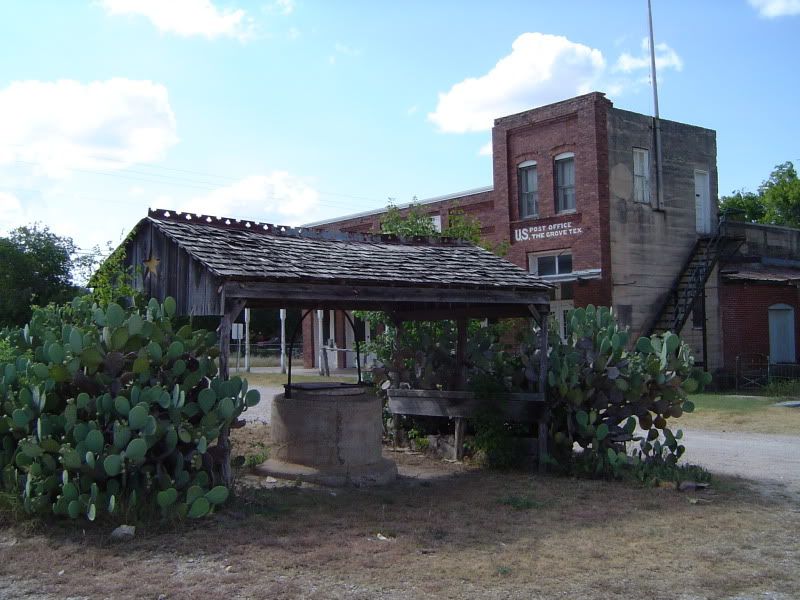
Jim Whitmore's well at the center of The Grove, sitting in front of the building that housed the bank, post office, and the W.J. Dube General Merchandise store
The downtown area of The Grove has been carefully and lovingly preserved by the few people who still live in the vicinity. The buildings in downtown are arranged around the central well, which Jim Whitmore dug with a pick and crowbar in 1872 (some folks say in 1853). Twenty-eight feet deep, the well is reportedly still wet to this very day. And it's a good thing the well was productive, because the settlement was quickly becoming a favorite of Wendish colonists who had left eastern Europe for Texas in search of religious freedom. By 1874, The Grove had amassed enough townfolk, Wendish or otherwise, to obtain its own post office, with J.B. Coleman serving as postmaster. The Wends established a Lutheran church at The Grove in 1883.
In the mid-1880s, The Grove boasted three general stores, two grocery stores, a candy shop, a blacksmith, a cotton gin, and two barbershops, among other establishments, all laid out around Whitmore's hand-dug well that sated the town's thirst even during the driest of seasons. The Grove had also amassed a population of 150. The town was small, but prosperous due to the cotton, grain, and hides produced and shipped by Grove farmers.
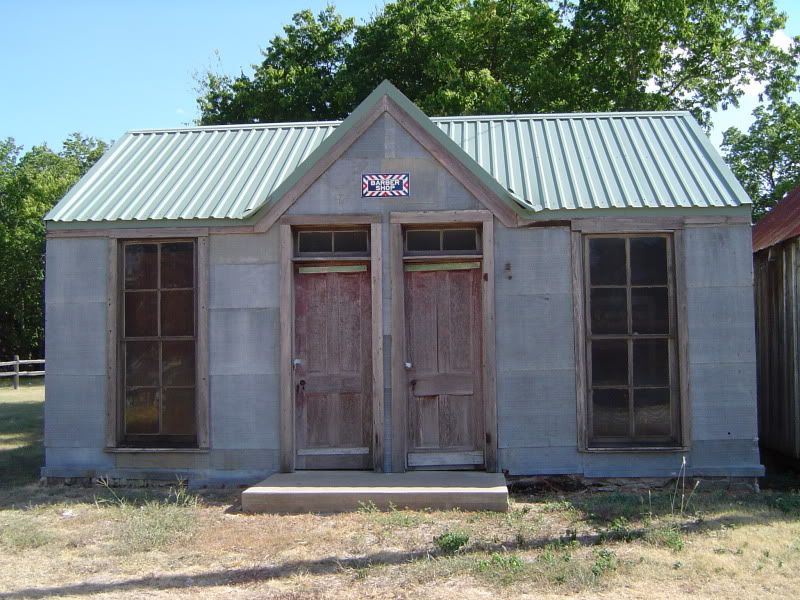
A barber shop (or perhaps two?)
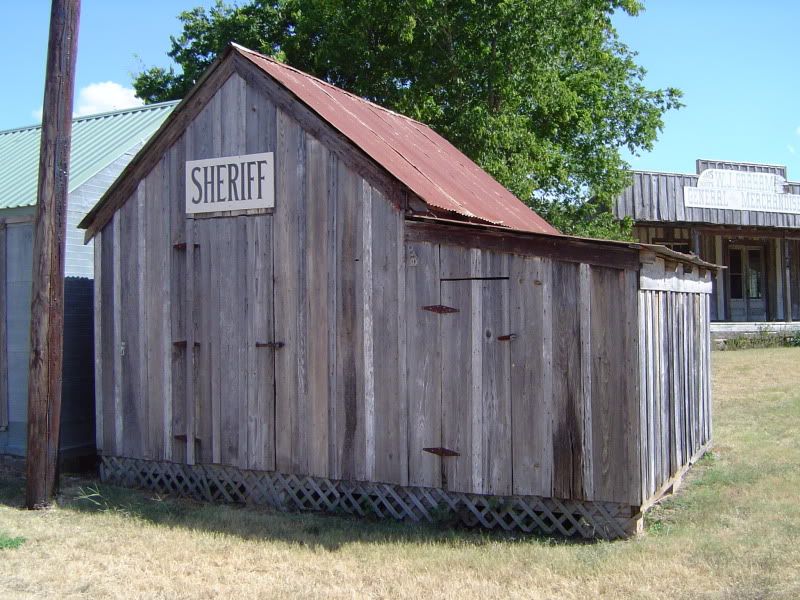
The diminutive Sheriff's Office at The Grove, next to the barber shop
1917 proved to be a busy year for The Grove, for this was the year that businessman W.J. Dube constructed a two-story red brick building that covered a whole city block. The middle of the building served as Dube's general store, with Planters State Bank opening next door within the building on September 14 with a capital stock of $10,000. The other side of the building housed the post office, with a doctor's office located just above the post office. Dube also served as postmaster and bank president.
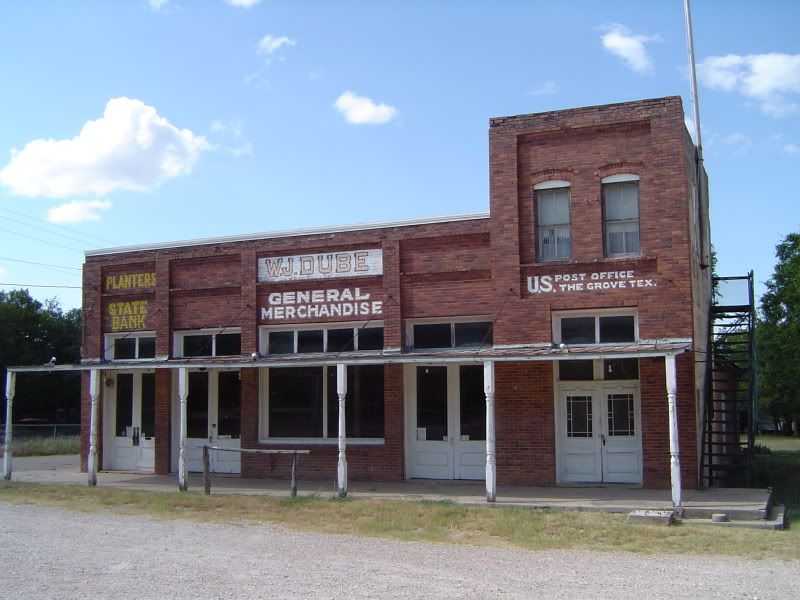
Another look at the Dube general store as well as the bank and post office
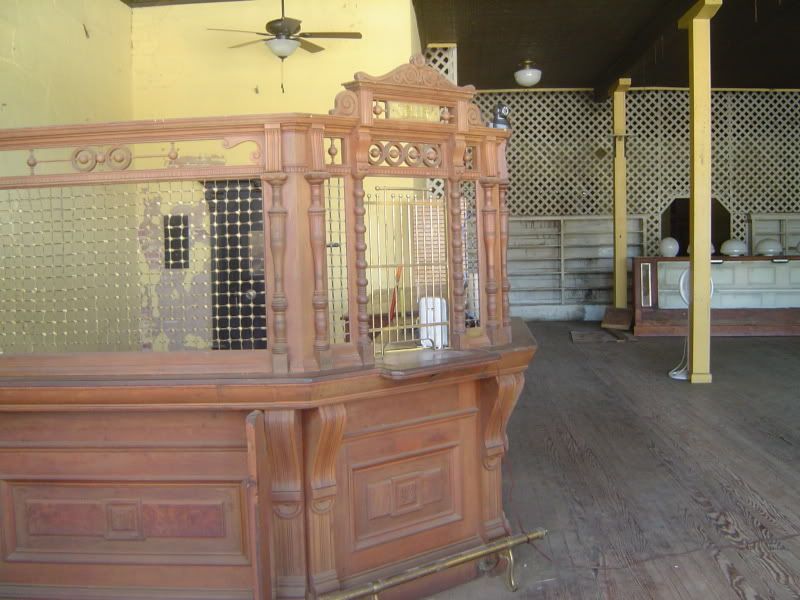
Teller's window inside Planters State Bank at The Grove

W.J. Graham's General Merchandise, one of Dube's competitors
Planters State Bank operated until 1932, when it was driven out of business by both robbery and embezzlement. But the one event that probably changed the fortunes of The Grove more than anything else was the construction of Texas State Highway 36 in 1936. The original plans by the Texas Department of Transportation called for the highway to run right through The Grove - requiring Whitmore's old well to be paved over and lost forever. The townfolk of The Grove demanded that their beloved well be spared, but the only solution was to reroute Highway 36 two-tenths of a mile north of The Grove. When that happened, much of the traffic simply bypassed The Grove without taking the short detour to visit the various establishments. The cotton gin soon went out of business. During the 1940s, the camp that later evolved into Fort Hood confiscated 250,000 acres of farmland from The Grove's farmers, forcing them to seek their fortunes elsewhere. The Grove lost its public school in 1948, and Dube's general store changed hands twice before being closed down for good in the 1960s. By this time, the only establishments still operating in The Grove were a Lutheran church and the old post office, which lasted until 1996.
In 1972, however, an Austin antiques collector named Moody Anderson purchased the entire downtown area of The Grove with a view to preserve it. He purchased the Cocklebur Saloon building from Round Rock and had it shipped up to The Grove, where it now sits next to the blacksmith's shop.

The Cocklebur Saloon and the blacksmith shop
Anderson also transformed Dube's general store into a museum that held all sorts of antiques that Anderson had collected over the years. Anderson's efforts breathed new life into The Grove and brought tourists from far and wide to get a look at how life used to be like in a small Texas town so many years ago. The museum contained various artifacts - antique covered wagons, bathtubs, weapons, hanging lamps, quack medicine bottles, farm implements, signs, and so on - that have been rented by movie producers and have shown up in movies and television series ranging from Lonesome Dove to the film version of The Best Little Whorehouse in Texas and even the Coen Brothers' remake of True Grit. Anderson even hosted jamborees in the Cocklebur Saloon.
But in 2010, the aging Anderson, who was recovering from a stroke, decided to auction off The Grove and all of the antiques within. Musician Chuck Allen performed at the last jamboree at the saloon:
1,800 lots of antiques and memorabilia were sold off at The Grove in April 2010 over a three-day period. As for the town itself, it was sold for $200,000 to Fran Moyer, whose grandfather was none other than W.J. Dube, beloved town elder of The Grove. Moyer had spent many childhood summers in The Grove, and she tearfully told the other auction attendees, "I just bought back my childhood."
Today, The Grove is home to 65 inhabitants. Some of the older houses near downtown have crumbled into ruins, while a few hang on for dear life. A few of the old buildings, including an old service station, have been converted into private homes. But the downtown area still stands, and Fran Moyer intends to keep it standing. She may eventually use the site to host family reunions and other events such as weddings. So if you get a chance, take Highway 36 to The Grove sometime soon. You'll be glad you did.
I believe the building should be JD Graham GM not WJ Graham. I think this building in the photo is an alteration, conglomerate of the two men WJ Dube and JD Graham.
ReplyDelete